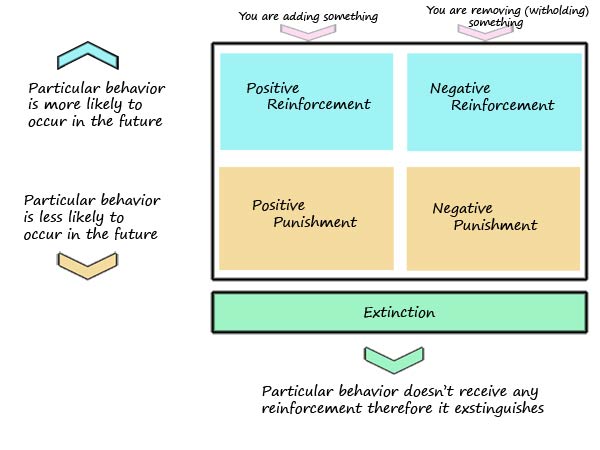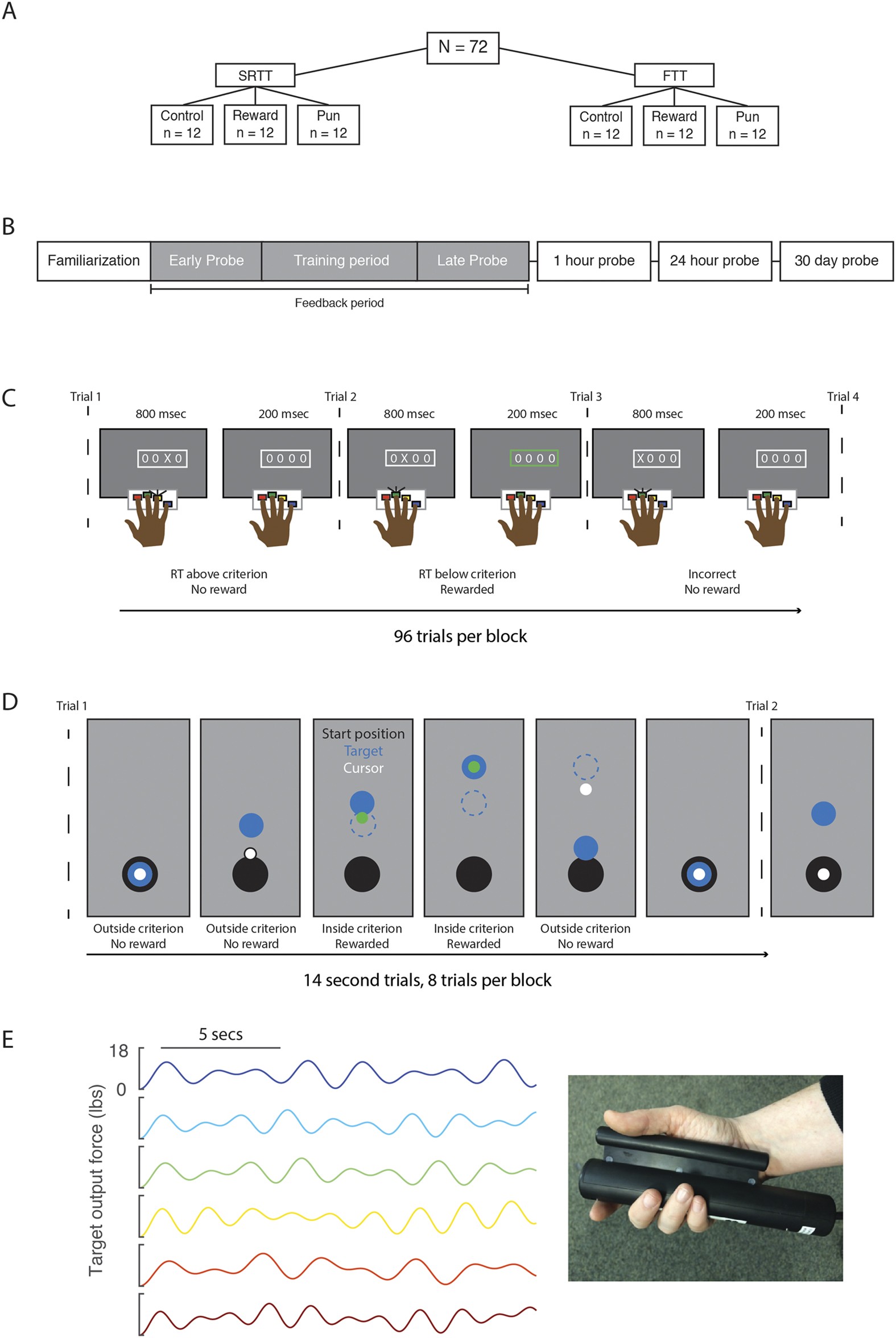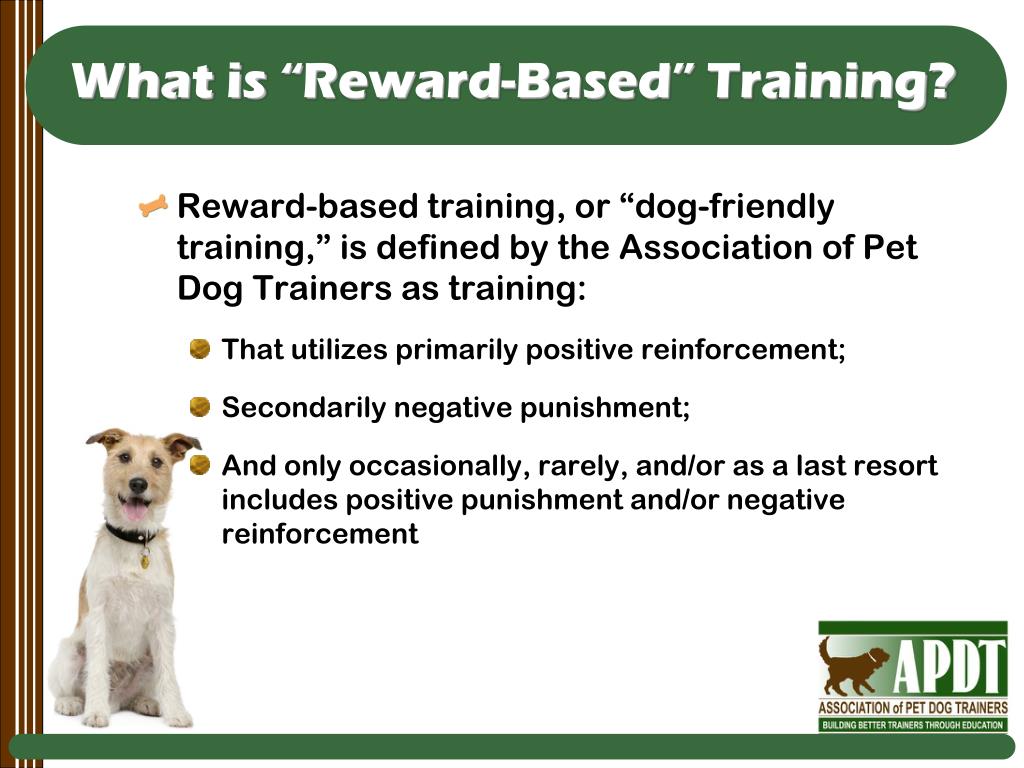Introduction

Training methods play a crucial role in shaping the behavior and development of our beloved pets. When it comes to training, there are two main approaches: reward-based training and punishment-based training. Each method relies on different techniques and principles to achieve desired outcomes. Choosing the right training method is essential for effective and compassionate training, as it can greatly impact the overall well-being of our animals.
In this article, we will explore the concepts, benefits, and limitations of both reward-based and punishment-based training methods. By understanding their differences and similarities, we can make an informed decision regarding the best approach to train our pets. We will also delve into positive reinforcement in reward-based training and negative reinforcement in punishment-based training, along with real-life success stories and case studies to provide practical insights. Ultimately, this information will empower pet owners to choose a training method that aligns with their values while ensuring the happiness and welfare of their furry companions.
Overview of Reward-Based and Punishment-Based Training

Reward-based training and punishment-based training are two different approaches to behavior modification in animals. Reward-based training focuses on reinforcing desired behaviors through positive reinforcement, while punishment-based training relies on aversive stimuli to discourage unwanted behaviors.
In reward-based training, animals are rewarded with treats, praise, or other forms of positive reinforcement when they exhibit desired behaviors. This approach emphasizes the importance of building a strong bond between the trainer and the animal, creating a positive learning experience.
On the other hand, punishment-based training involves using aversive methods such as physical corrections or verbal reprimands to discourage undesirable behavior. This approach relies on the idea that animals will avoid negative consequences and learn to associate certain actions with discomfort or pain.
Both methods have their proponents and critics, but understanding the differences between them is crucial in choosing the most effective and humane approach for training your pet.
Importance of choosing the right training method

Choosing the right training method for your pet is of utmost importance. It sets the foundation for their learning and behavior, and can greatly impact their overall well-being. The right training method ensures that your pet feels safe, valued, and understood during the training process. It promotes a positive bond between you and your pet, building trust and enhancing communication.
Using an appropriate training method also helps in achieving desired results effectively. Reward-based training methods have been proven to be highly effective in shaping desirable behaviors, while punishment-based methods can often lead to negative consequences such as fear, anxiety, and aggression.
By choosing the right training method, you are not only promoting a harmonious relationship with your pet but also ensuring their emotional and mental welfare. It is essential to educate yourself on different approaches and make an informed decision based on what will work best for your individual pet.
Reward-Based Training
_1644621440.jpg?width=2400&optimize=medium)
Reward-Based Training is a popular and effective method used to train animals, including pets. This type of training focuses on positive reinforcement to encourage desired behaviors. When an animal exhibits the desired behavior, they are rewarded with treats, praise, or other forms of positive reinforcement. The underlying principle of this approach is that animals are more likely to repeat behaviors that are rewarded.
Reward-based training offers several benefits over punishment-based training. It creates a positive environment for the animal, promoting a strong bond between the trainer and the pet. It also helps in building trust and confidence while encouraging learning through motivation rather than fear or intimidation. Additionally, reward-based training is known to yield long-term results and can be used to teach a wide range of commands and behaviors.
Overall, reward-based training is proven to be effective, humane, and enjoyable for both the trainer and the animal.
Understanding Reward-Based Training

Reward-based training is a popular and effective method of teaching animals through positive reinforcement. This approach focuses on rewarding desired behaviors rather than punishing unwanted behaviors. The underlying principle is that animals are more likely to repeat actions when they are rewarded for them.
In reward-based training, trainers use treats, praise, toys, or other forms of positive reinforcement to encourage animals to exhibit the desired behavior. By associating the behavior with a pleasant outcome, such as a treat, the animal learns to associate the action with a positive experience.
This method not only helps in teaching new commands or tricks but also in shaping appropriate behavior and preventing problem behaviors from developing. The emphasis on positive reinforcement creates a harmonious and enjoyable learning environment for both the trainer and the animal.
By understanding how reward-based training works and utilizing it consistently and effectively, pet owners can build strong bonds with their animals while teaching them important skills and behaviors.
Benefits and advantages of Reward-Based Training

Reward-Based Training offers numerous benefits and advantages for both the pet and the owner. Due to its positive approach, this method promotes a healthy and loving relationship between them. One significant benefit is that it enhances the bond between the pet and the owner by promoting trust and mutual understanding. It also creates a positive learning environment, as pets are motivated to repeat behaviors that result in rewards, leading to successful training outcomes.
Furthermore, Reward-Based Training is known to be more effective for long-term behavior modification compared to punishment-based methods. Pets respond better when they are rewarded for desirable behaviors rather than being punished for undesirable ones. This approach also encourages creativity in training techniques, allowing owners to tailor their methods to suit their individual pets' needs.
Additionally, Reward-Based Training has been shown to have a positive impact on animal welfare. It focuses on reinforcing good behavior rather than suppressing unwanted behavior through punishment, leading to a happier and more confident pet.
Choosing this method not only results in well-trained pets but also fosters a strong bond based on trust and respect between owners and their furry companions.
Punishment-Based Training

Punishment-Based Training is a method of training that relies on the use of aversive stimuli or consequences to discourage unwanted behavior in animals. This approach involves applying punishments, such as physical corrections, verbal reprimands, or even the use of shock collars, in order to suppress undesirable actions.
In Punishment-Based Training, the focus is on deterring the animal from performing certain behaviors through the threat or application of aversive techniques. The idea is that by experiencing discomfort or unpleasant consequences, the animal will be motivated to avoid repeating the unwanted behavior.
However, Punishment-Based Training has several drawbacks and limitations. Firstly, it can lead to fear and anxiety in animals, potentially damaging their trust and relationship with their trainers. Additionally, this method may only address the immediate behavior without addressing the underlying cause, resulting in incomplete and temporary results.
It is important to consider these factors when deciding on a training method for your pet and to understand the potential risks and limitations of Punishment-Based Training.
Understanding Punishment-Based Training

Understanding Punishment-Based Training involves using aversive stimuli or consequences to discourage undesirable behavior in animals. This training method relies on the principle that animals will learn to avoid certain actions through experiencing negative outcomes. Common forms of punishment used in this approach include physical corrections, such as leash jerks or hitting, as well as verbal reprimands or withdrawal of rewards. The intention behind punishment-based training is to suppress or eliminate inappropriate behaviors by associating them with unpleasant consequences.
However, it is important to note that punishment-based training can be stressful and potentially harmful to animals. The use of force and intimidation can lead to fear, anxiety, and aggression in some cases. It may also hinder the development of a trusting bond between the animal and their handler. Consequently, understanding the potential drawbacks and limitations of punishment-based training is crucial when considering different training methods for your pet.
Drawbacks and limitations of Punishment-Based Training

Punishment-based training methods, despite being popular in the past, have several drawbacks and limitations. One significant limitation is that punishment-based training can create fear and anxiety in animals. The use of aversive techniques, such as shock collars or physical reprimands, can lead to a negative association with training sessions and with the trainer themselves. This can result in a breakdown of trust between the animal and their owner.
Additionally, punishment-based training methods often fail to address the underlying cause of problematic behavior. Instead of teaching the animal appropriate alternatives, punishment-based methods only suppress the behavior temporarily. This means that the underlying issue remains unresolved, and the likelihood of recurrence is high.
Furthermore, punishment-based training can have unintended consequences, causing dogs or other animals to become aggressive or defensive. The use of physical force or harsh methods may trigger a defensive response from the animal, which can lead to aggressive behaviors towards both humans and other animals.
It is essential to consider these drawbacks and limitations when deciding on a training method for your pet.
Comparison of Reward-Based and Punishment-Based Training

Reward-Based and Punishment-Based Training are two contrasting approaches when it comes to training animals. Reward-based training focuses on positive reinforcement, where desirable behaviors are rewarded with treats, praise, or other forms of motivation. On the other hand, punishment-based training emphasizes negative consequences for undesirable behaviors, such as scolding, leash corrections, or withholding rewards.
In comparing these two methods, it is important to note their differences and similarities. While both can effectively train animals to some extent, reward-based training tends to be more effective in the long term. This is because it creates a positive association with desired behaviors and encourages a stronger bond between the trainer and the animal. Punishment-based training, on the other hand, has limitations as it can lead to fear and anxiety in animals and may result in suppressed behavior rather than genuine learning.
It is essential to consider the impact on animal welfare when determining which training method to use. Reward-based training promotes a more positive environment and fosters a healthier relationship between trainer and animal. Additionally, it has been proven to yield better results without compromising the well-being of the animal.
In conclusion, while both reward-based and punishment-based training methods have their place in animal training, it is crucial to consider the ethical implications and long-term effects. Reward-based training offers more benefits in terms of effectiveness and animal welfare, making it the preferred choice for responsible pet owners seeking lasting results in their companion's behavior.
Differences and similarities between Reward-Based and Punishment-Based Training

Reward-Based and Punishment-Based training methods have distinct differences and similarities. The primary difference lies in the approach used to modify behavior. Reward-Based training focuses on reinforcing desired behaviors with rewards or positive reinforcement, such as treats or praise. In contrast, Punishment-Based training utilizes punishment or negative consequences to discourage unwanted behaviors.
While both methods aim to shape behavior, their approach differs significantly. Reward-Based training promotes a positive and enjoyable experience for the animal, fostering a strong bond between trainer and pet. It emphasizes communication, trust, and cooperation. On the other hand, Punishment-Based training can create fear or anxiety in animals due to the negative consequences they experience when exhibiting undesirable behaviors.
Despite their differences, both methods share a common goal of behavioral modification. They seek to establish boundaries and teach animals appropriate behaviors. However, it is essential to note that while punishment may suppress unwanted behaviors temporarily, it may not address the underlying cause and can potentially lead to other behavioral issues.
Understanding these differences and similarities is crucial when choosing a training method for your pet. Evaluating your pet's individual needs and temperament will help guide you towards selecting the most effective approach for long-term success and overall well-being.
Effectiveness and long-term results

When comparing reward-based training and punishment-based training, it is important to consider their effectiveness and long-term results.
Reward-based training has been shown to be highly effective in teaching new behaviors and reinforcing desired ones. By using positive reinforcement, such as treats, praise, or playtime, animals are motivated to repeat the behavior that leads to these rewards. This method creates a positive association with the training experience and promotes eager participation from the animal.
On the other hand, punishment-based training focuses on aversive consequences such as physical corrections or verbal reprimands when an undesired behavior is exhibited. While it may produce immediate results in suppressing the behavior, research suggests that it can lead to negative side effects in the long run. Animals trained using punishment may become fearful, stressed, or even aggressive.
In terms of long-term results, reward-based training often paves the way for a strong bond between the trainer and the animal. The positive reinforcement approach builds trust, confidence, and a mutual understanding between both parties. This can lead to better overall behavior and obedience in the animal over time.
In contrast, punishment-based methods may erode the trust between trainer and animal. The fear and anxiety caused by aversive techniques can strain the relationship and hinder progress in their training.
Ultimately, choosing a training method with proven effectiveness and positive long-term results is crucial for successful pet training.
Positive Reinforcement in Reward-Based Training

Positive reinforcement is a fundamental concept in reward-based training. It involves providing a desirable stimulus to encourage and reinforce desired behavior in animals. In reward-based training, positive reinforcement is used to reward animals for performing the desired behavior correctly.
This type of training focuses on using rewards such as treats, praise, or toys to motivate animals and build a positive association with the desired behavior. When an animal successfully performs the desired behavior, they receive the reward, which increases the likelihood of them repeating that behavior in the future.
Positive reinforcement is effective because it encourages animals to actively engage in their training, making it a positive and enjoyable experience for both the animal and the trainer. Unlike punishment-based methods, reward-based training strengthens the bond between trainer and animal by promoting trust and mutual respect.
Trainers using positive reinforcement techniques employ various methods such as clicker training or verbal cues paired with rewards. These techniques are based on redirecting undesired behaviors into more appropriate ones through positive reinforcement, which has proven to be highly effective.
Overall, positive reinforcement in reward-based training empowers animals and allows them to learn at their own pace while fostering a cooperative relationship between trainer and trainee.
Exploring the concept of Positive Reinforcement

Positive reinforcement is a fundamental concept in reward-based training. It involves the use of rewards, such as treats, praise, or play, to reinforce desired behaviors in animals. The underlying principle is simple - when a behavior is paired with a positive consequence, the animal is more likely to repeat that behavior in the future.
In positive reinforcement training, the focus is on rewarding the desired behavior rather than punishing undesirable behaviors. This approach creates a positive association between the behavior and the reward, making learning enjoyable for both the trainer and the animal.
Positive reinforcement can be implemented through various methods and techniques. For example, trainers may use clicker training, where a click sound is followed by a treat to mark and reinforce the desired behavior. This technique allows for clear communication and immediate feedback during training sessions.
Overall, positive reinforcement promotes a harmonious relationship between animals and their trainers. It builds trust and strengthens the bond between them while effectively teaching new skills or modifying behaviors. By focusing on positive experiences, this training method encourages animals to actively participate and make choices willingly.
Methods and techniques used in Reward-Based Training

In reward-based training, positive reinforcement plays a crucial role. This involves using rewards such as treats, praise, toys, or playtime to reinforce desired behaviors. One method commonly used is the "clicker training" approach, where a clicker is used to signal to the animal that they have performed the correct behavior and will be rewarded. Another technique is known as shaping, where an animal is gradually guided towards the desired behavior through small steps. Targeting is also used, where animals are taught to touch or follow a specific object, helping them learn new commands or tricks. Additionally, rewards can be combined with verbal cues to associate certain words with specific actions. These methods create a positive and enjoyable learning experience for animals, promoting better understanding and cooperation.
Negative Reinforcement in Punishment-Based Training

Negative reinforcement is a key aspect of punishment-based training methods. In this type of training, negative reinforcement involves the removal or avoidance of an aversive stimulus to increase the likelihood of a desired behavior. The idea behind negative reinforcement is that an unpleasant consequence is applied when the animal does not perform the desired behavior, and by removing or avoiding this consequence, the animal learns to associate the desired behavior with relief or freedom from discomfort.
For example, in punishment-based dog training, if a dog jumps on someone, they may be given a sharp tug on their collar (aversive stimulus) until they stop jumping. The release of pressure from the collar (negative reinforcement) serves as an incentive for the dog to learn that staying down will prevent discomfort.
It is important to note that while negative reinforcement can be effective in achieving immediate results, it can have negative long-term effects on the animal's well-being and behavior. The use of aversive stimuli may create fear or anxiety in animals, leading to heightened stress levels and possible aggressive responses. As such, it is crucial for trainers to understand the potential consequences of using negative reinforcement and consider alternative methods that prioritize positive reinforcement and reward-based approaches.
Explanation of Negative Reinforcement

Negative reinforcement is a training method that aims to eliminate or diminish unwanted behaviors by applying an unpleasant stimulus and withdrawing it when the desired behavior is exhibited. This form of training relies on the concept of aversive conditioning, where an undesirable consequence is introduced in order to encourage learning.
In negative reinforcement, the animal learns to associate an action or behavior with the removal of an unpleasant stimulus. For example, if a dog pulls on its leash during a walk, the trainer may apply gentle pressure with a correction collar until the dog stops pulling. Once the pulling ceases, the pressure is released, providing relief to the dog. Over time, the dog learns that walking calmly without pulling results in no discomfort.
While negative reinforcement can be effective in certain instances, it is important to note that it may have negative consequences for both the animal's emotional well-being and the human-animal bond. This form of training can result in increased stress levels and anxiety in animals, leading to potential behavioral issues. Thus, it is crucial to carefully consider the impact of negative reinforcement on an individual animal before employing this method.
Methods and techniques used in Punishment-Based Training

In Punishment-Based Training, the focus is on discouraging undesirable behavior through the application of aversive stimuli. This approach emphasizes the use of punishment to deter unwanted actions from occurring again. Some common methods and techniques utilized in Punishment-Based Training include:
- Physical Corrections: This involves physically reprimanding the animal, such as using forceful leash corrections or physical restraints to suppress unwanted behavior.
- Verbal Reprimands: Using harsh or stern verbal cues, such as yelling or shouting, to communicate disapproval and discourage certain behaviors.
- Dominance-Based Techniques: Establishing dominance over the animal through methods such as alpha rolls or forcing submissive postures in order to assert control and avoid disobedience.
- Sprays or Noises: Utilizing tools like water sprays, air horns, or rattling devices to startle the animal and create negative associations with specific behaviors.
It is important to note that while punishment may produce immediate results, it does not necessarily address the underlying cause of the behavior and can potentially lead to adverse effects on an animal's emotional well-being and trust in their handler.
Considerations for Choosing the Right Training Method

When it comes to choosing the right training method for your pet, there are several important considerations to keep in mind. First and foremost, it is crucial to understand the needs and personality of your pet. Different animals respond differently to various training techniques, so it is essential to tailor your approach to their individual traits.
Another crucial factor to consider is the impact on animal welfare and behavior. Reward-based training emphasizes positive reinforcement, creating a positive and trusting bond between you and your pet. Punishment-based training, on the other hand, utilizes negative reinforcement strategies that can potentially have adverse effects on your pet's emotional well-being.
Additionally, it is important to assess the effectiveness and long-term results of each training method. Reward-based training has been proven effective in promoting desired behaviors while maintaining a harmonious relationship with your pet. Punishment-based training may achieve short-term results but may lead to fear, anxiety, or aggression in the long run.
Ultimately, the decision of which training method to choose should be based on what is best for your pet's well-being and happiness. By considering these factors, you can make an informed decision that will support your pet's growth and development while fostering a loving bond between you both.
Factors to consider before deciding on a training method

When choosing a training method for your pet, there are several factors to consider. Firstly, you need to assess your pet's individual needs and temperament. Each animal is unique, and what works for one may not work for another. Additionally, consider your own abilities and preferences as a trainer. Are you patient and consistent enough for reward-based training, or do you feel more comfortable with the immediate results of punishment-based methods? It's also important to think about the long-term effects on your pet's behavior and well-being. Reward-based training promotes a positive relationship between you and your pet and encourages them to make good choices willingly. On the other hand, punishment-based training can cause fear, anxiety, and even aggression in some animals. By carefully considering these factors, you can make an informed decision that promotes the best outcomes for both you and your furry friend.
Impact on animal welfare and behavior

The choice between reward-based and punishment-based training methods has a significant impact on the welfare and behavior of animals. Reward-based training focuses on positive reinforcement, using rewards such as treats or praise to encourage desired behaviors. This approach creates a positive and enjoyable learning environment for animals, promoting their well-being and building a strong bond between the animal and trainer.
On the other hand, punishment-based training relies on aversive stimuli to discourage unwanted behaviors. This can include physical punishments or verbal reprimands. While this method may provide short-term results, it can have detrimental effects on an animal's welfare. Harsh punishments can lead to fear, anxiety, and aggression in animals.
Studies have consistently shown that reward-based training results in less stress and aggression in animals compared to punishment-based methods. By prioritizing the welfare of animals, reward-based training promotes positive behaviors, while also fostering a trusting and mutually beneficial relationship between the trainer and the animal.
Success Stories and Case Studies

The use of reward-based training methods has led to numerous success stories and case studies in the field of animal training. In these instances, trainers have experienced remarkable results by focusing on positive reinforcement and rewards. For example, a study documented the success of reward-based training in helping a previously aggressive dog become more obedient and friendly towards others. The consistent use of treats and praise for desirable behaviors gradually shaped the dog's behavior, leading to an overall improvement in their temperament. Similarly, many pet owners have shared their success stories of using reward-based training to teach their pets various commands and tricks. These stories highlight the effectiveness and positive impact of reward-based techniques in fostering a strong bond between animals and their trainers.
Real-life examples of Reward-Based Training

Reward-Based Training has been proven to be highly effective in various real-life scenarios. One such example is training a dog to perform tricks or follow commands using positive reinforcement. For instance, when teaching a dog to sit, the trainer rewards the dog with treats or praise every time it sits on command. With consistent rewarding, the dog learns that sitting leads to pleasant experiences, and as a result, it is more likely to repeat the behavior in the future.
Another example is training therapy animals. Reward-Based Training is often used to teach therapy animals how to interact calmly and positively with individuals in need. This includes rewarding them for gentle touches and staying calm in chaotic environments.
Overall, these real-life examples highlight the success of Reward-Based Training in shaping desired behaviors and building strong bonds between trainers and their animals.
Real-life examples of Punishment-Based Training

Real-life examples of Punishment-Based Training can range from using physical force to reprimand a dog for inappropriate behavior to employing aversive training tools like shock collars or choke chains. In these instances, the focus is on punishing the undesired behavior rather than reinforcing positive behaviors. For example, if a dog jumps on guests, a punishment-based trainer might use a leash correction or physically push the dog down to deter the behavior.
However, it is important to note that punishment-based training methods have faced criticism for their potential negative impact on an animal's emotional well-being and the potential for long-lasting behavioral issues. Many trainers and experts advocate for more humane and positive approaches to training that prioritize rewards and reinforcement over punishment. This approach creates a healthier relationship between the owner and the animal, fostering trust and cooperation.
Conclusion

In conclusion, choosing the right training method for your pet is crucial in ensuring their well-being and behavior. Both reward-based and punishment-based training have their own set of benefits and drawbacks.
Reward-based training, with its emphasis on positive reinforcement, offers a more humane and effective approach in shaping desired behaviors. It promotes a strong bond between the owner and pet while fostering a positive learning environment.
On the other hand, punishment-based training relies on negative reinforcement and can have adverse effects on the animal's mental and emotional state. It can lead to fear, anxiety, and even aggression.
When deciding on a training method, it is important to consider factors such as the impact on animal welfare and long-term results. Success stories from real-life examples can provide valuable insights into the effectiveness of each approach.
Ultimately, making an informed decision based on careful consideration and understanding of these training methods will result in a happier, well-behaved pet.
Summarizing the key points

In this article, we have explored the two main methods of training: reward-based training and punishment-based training. Reward-based training focuses on positive reinforcement and rewarding desired behavior, while punishment-based training relies on negative reinforcement and punishing unwanted behavior.
It is crucial to choose the right training method for your pet as it can have a significant impact on their well-being and behavior. Reward-based training offers numerous benefits, such as enhancing the bond between you and your pet, promoting a positive learning experience, and yielding long-term results. On the other hand, punishment-based training has limitations and can have adverse effects on your pet's mental and emotional state.
Positive reinforcement plays a vital role in reward-based training, using treats, praise, and playtime to motivate your pet. In contrast, punishment-based training utilizes negative reinforcement, such as withholding rewards or applying aversive stimuli.
Before deciding on a training method, consider factors like your pet's temperament, their specific behaviors you want to address, and the overall impact on their welfare.
In conclusion, understanding the differences between reward-based and punishment-based training methods allows you to make an informed decision that will positively benefit your pet's well-being and behavior.
Making an informed decision for training your pet

When it comes to training your pet, making an informed decision is crucial. Each training method has its own set of benefits and drawbacks, so it's important to weigh them carefully before deciding which approach to take. Consider the temperament and learning style of your pet, as well as their unique needs and behavior challenges. Additionally, think about the long-term effects of the training method on their overall well-being and relationship with you.
Gathering factual data about both reward-based and punishment-based training can help you make an educated choice. Look into scientific studies and expert opinions to understand the effectiveness and potential risks associated with each method. Consulting with a professional animal trainer or behaviorist can also provide valuable guidance tailored to your specific situation. Ultimately, by taking the time to thoroughly research and consider these factors, you can make an informed decision that will pave the way for a successful training journey with your beloved pet.




0 Comments